At the end of July, PennDOT celebrated the relocation of a historic bowstring truss bridge in Schuylkill County onto Schuylkill River Greenways’ trail system with a ribbon cutting ceremony.
The bridge was removed from its 20th century crossing, rehabilitated to carry pedestrians and cyclists, and set on new abutments less than four miles to the north. The project was funded by PennDOT’s Multimodal Deputate with additional money provided by Federal Highway Administration as mitigation for two adverse effects to bridges in nearby counties.
This metal bowstring bridge is one of three of its kind remaining. Each of the three were once on the vehicular network but now carry pedestrians and cyclists. While the structure’s history is interesting, the history of its history is also worth sharing. It is a tale of true collaboration, appropriate for this project that came to fruition thanks to the many people who invested their time, money, expertise, and knowledge.
A fortuitous field view
The bowstring caught PennDOT’s attention on the way to visit a different truss bridge with a carload of architectural historians. One of them spotted the bowstring tucked behind vegetation off Mt. Carbon Arch Road, between Mt. Carbon Borough and State Route 61, spanning a narrow section of the Schuylkill River. We pulled off, investigated, and left with a mission to find out more.
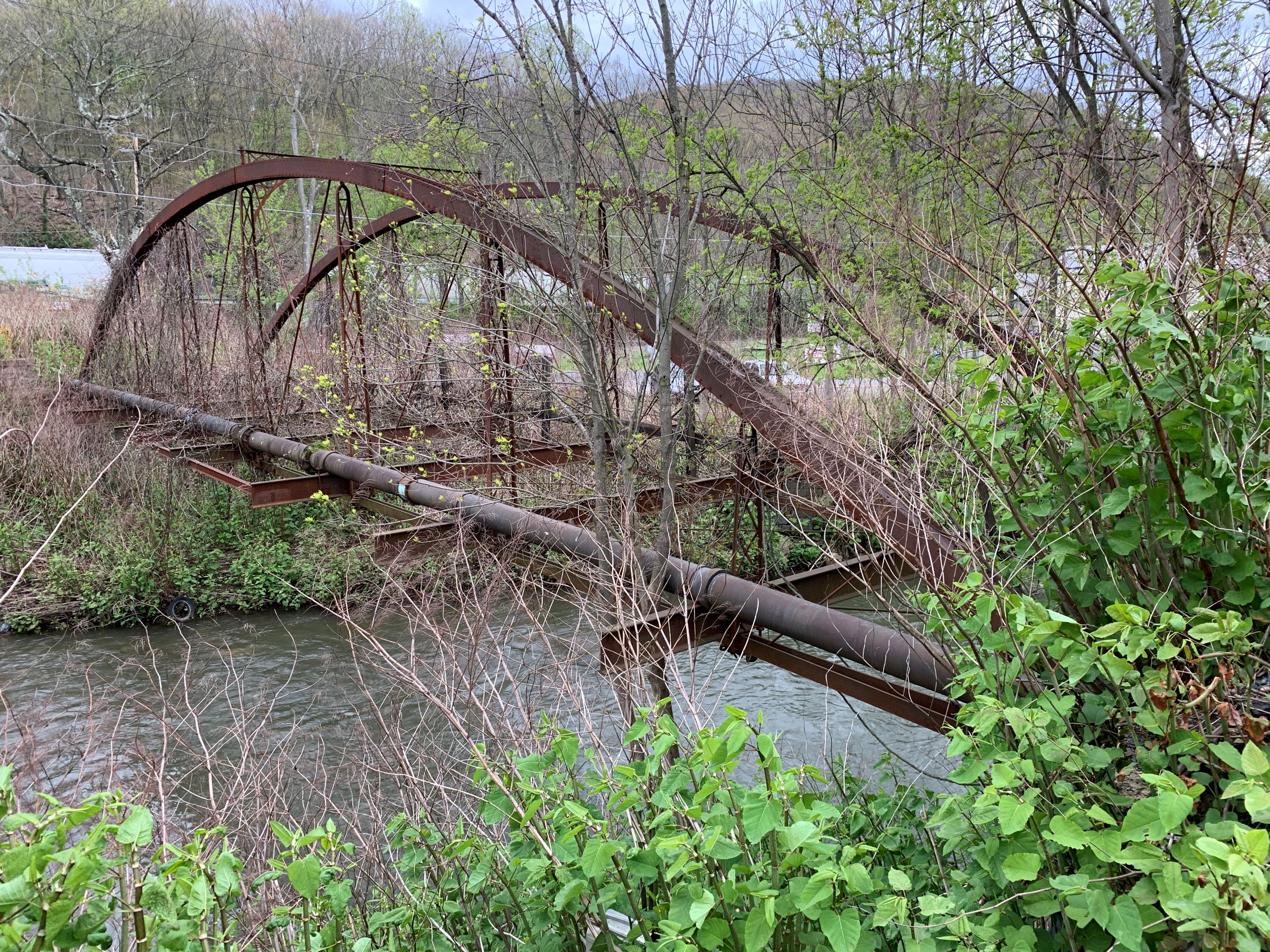
The historic bowstring truss bridge carrying a water line over the Schuylkill River between State Route 61 (Pottsville Boulevard) and Mt. Carbon Borough, its original location prior to rehabilitation. View from the Mt. Carbon Arch Road concrete arch bridge, looking northwest. (Photo source: PennDOT.)
Identifying the owner
Several engineers in PennDOT’s Allentown office helped narrow down potential owners of the old bridge, but two people clinched it– Right of Way Administrator and lifelong Schuylkill County resident Ken Kutchinsky – he even went to the historical society to research the structure’s history – and our Utilities Coordinator, Dave Rader, who became involved once we realized the bridge carried a utility line over the river.
They led me to Schuylkill County Municipal Authority’s (SCMA) Executive Director, Pat Caufield. SCMA’s Pottsville office showcases the evolution of the area’s water treatment and use through display cases of artifacts and walls adorned with historic photographs and prints. That appreciation of the county’s history aligned with their dedication to finding this bridge a new home. Like Ken, Pat scoured their archives, locating the deed transferring the bridge from the Schuylkill County Board of Commissioners to SCMA in 1974. The bridge’s history started to come together.
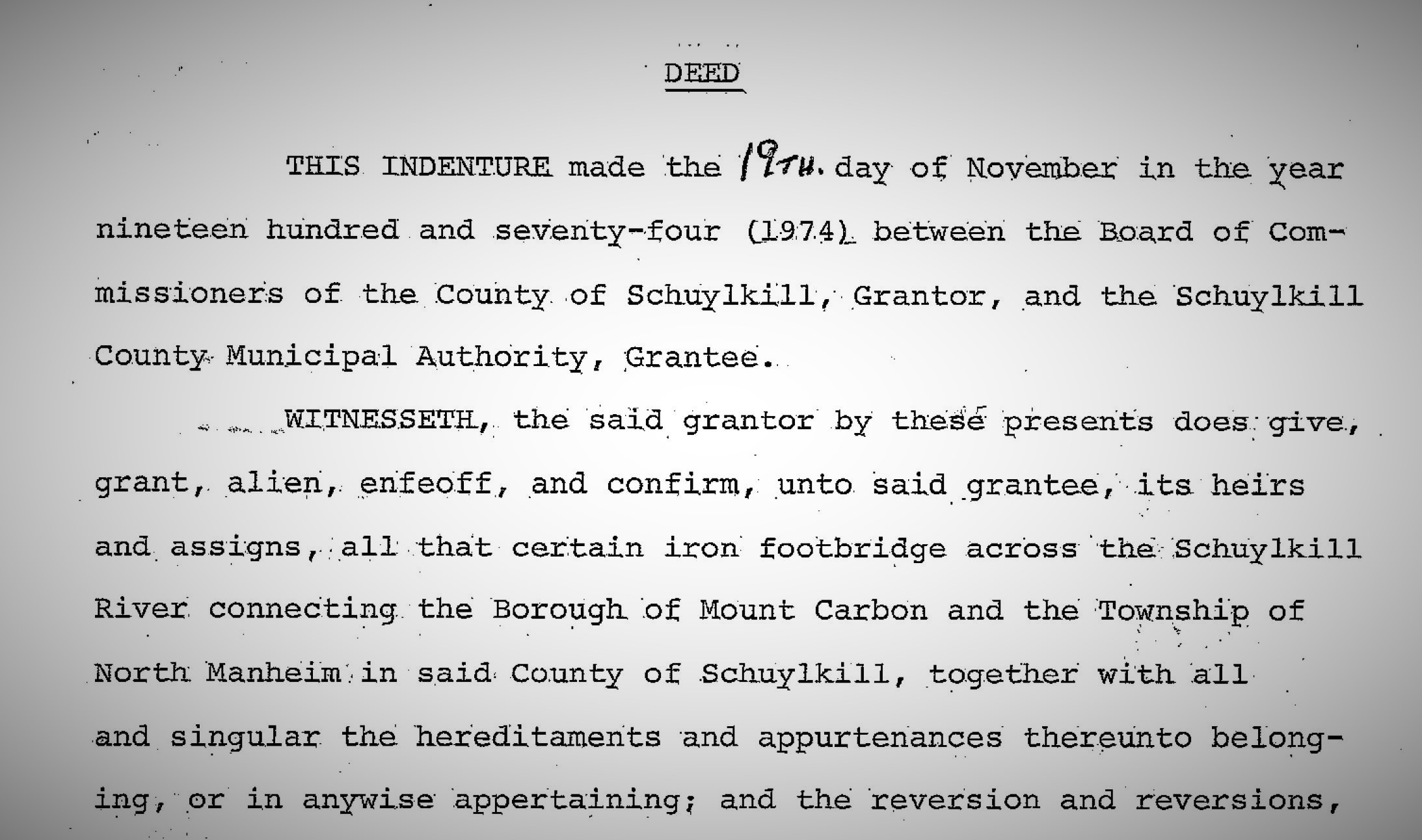
The 1974 deed transferring the bowstring’s ownership from Schuylkill County Board of Commissioners to Schuylkill County Municipal Authority. Note it is referred to as an “iron footbridge,” suggesting that as late as the early 1970s, the structure was still used as a pedestrian bridge. (Photo source: Schuylkill County Municipal Authority.)
Local historians join the search
Later in our research, we learned this was not the first time PennDOT noticed the bridge. Our agency evaluated it for the National Register of Historic Places in 1994 as part of a Route 61 project. The documentation unfortunately erroneously associated it with the Schuylkill Electric Railway and assigned a construction date of c. 1890. Once we started this current project, several community members became involved in clearing up the bridge’s history.
The Schuylkill River Greenway Association’s historian, Mike Szilagyi, along with several local historians interested in the bridge, dove into archives. With their collective knowledge of the area’s rail system, and long-time resident Lew Hoy’s expertise, they were able to prove the bridge was never part of the electric railway system. Another historian, John Bambrick, found a newspaper article from 1894 discussing its construction in Mt. Carbon. They also tracked down a Schuylkill County Historical Society photo of the “new” county bridge’s construction, which bypassed the bowstring to the south in 1926. Its history was becoming clearer but was still incomplete.
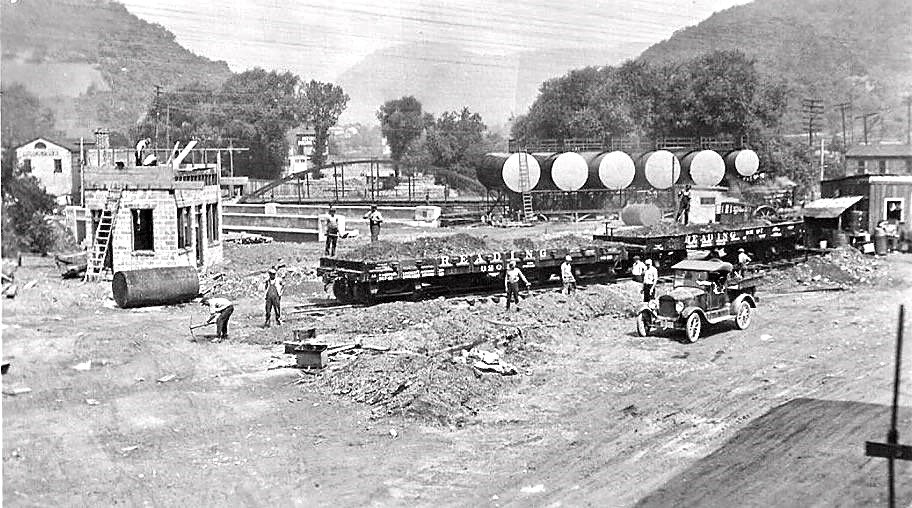
A concrete arch bridge (which became Mt. Carbon Arch Road) was constructed in 1926 to carry vehicular traffic over the Schuylkill River. The photograph was taken from what is now State Route 61/Pottsville Boulevard, looking northwest. The bowstring is visible north of the new bridge. (Photo source: Schuylkill County Historical Society.)
Was Mt. Carbon its original location?
Enter Nathan Holth, creator of a national historic bridge website, who was participating in the bridge rehabilitation project as a consulting party. He had a strong hunch the bridge was earlier than 1894. His doubts stuck with me, which led me back to the historic newspapers.
Truss bridges were designed to be disassembled and moved; could this have been moved to Mt. Carbon from somewhere else? Sure enough, more newspaper articles helped us figure out what we think is the rest of the story. An 1893 article in the Pottsville Republican described the plan as, “the Palo Alto half of the old bridge, intended to be used at Mt. Carbon, was erected in 1878…”
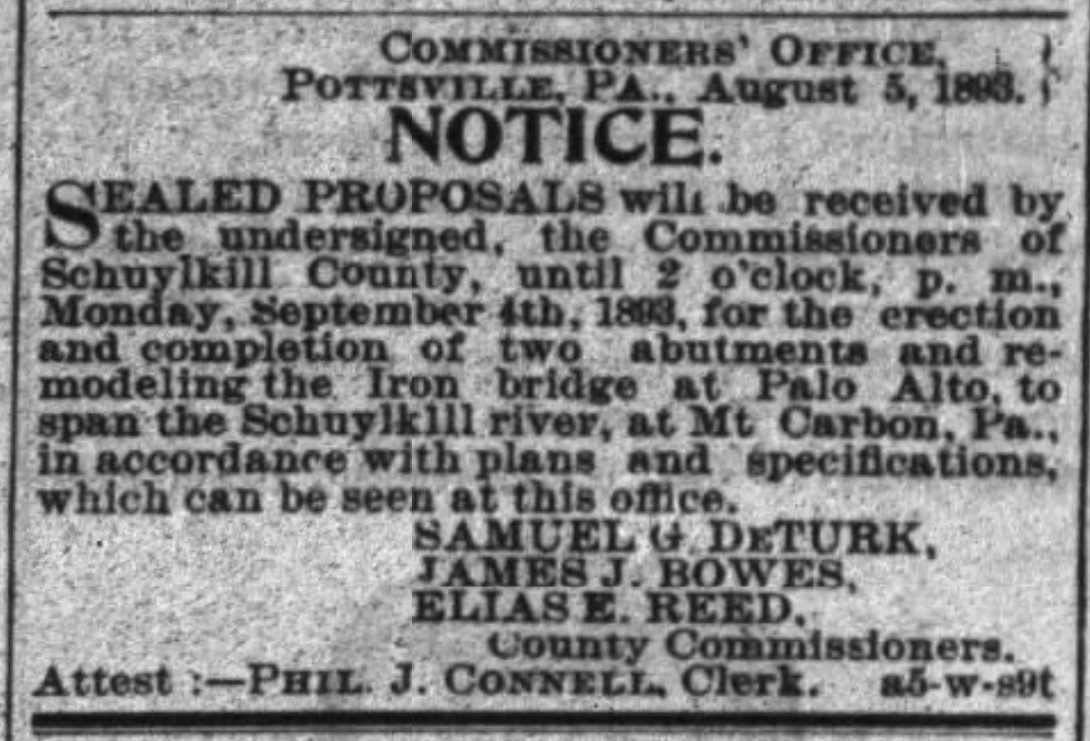
Bingo! I shared this and other articles with the local historians, who immediately scoured the internet and historical society records, finding other documents suggesting this might be our bridge. An exciting exchange of ideas followed between John, Mike, Sandy Sorlein and Pat, who even looped in Lisa Mahall, the County engineer. Pat and Lisa both located county records discussing the move.
To recap…
We are (somewhat) confident the bridge was originally constructed in 1878 to carry traffic over the Schuylkill Canal in Palo Alto.

Historic postcard showing pedestrians on the bridge in Mt. Carbon. The railing in this postcard influenced the design of the current replacement railing. (Photo source: Schuylkill County Historical Society)
It was disassembled in 1893 and reassembled in Mt. Carbon, opening to traffic on January 19, 1894.
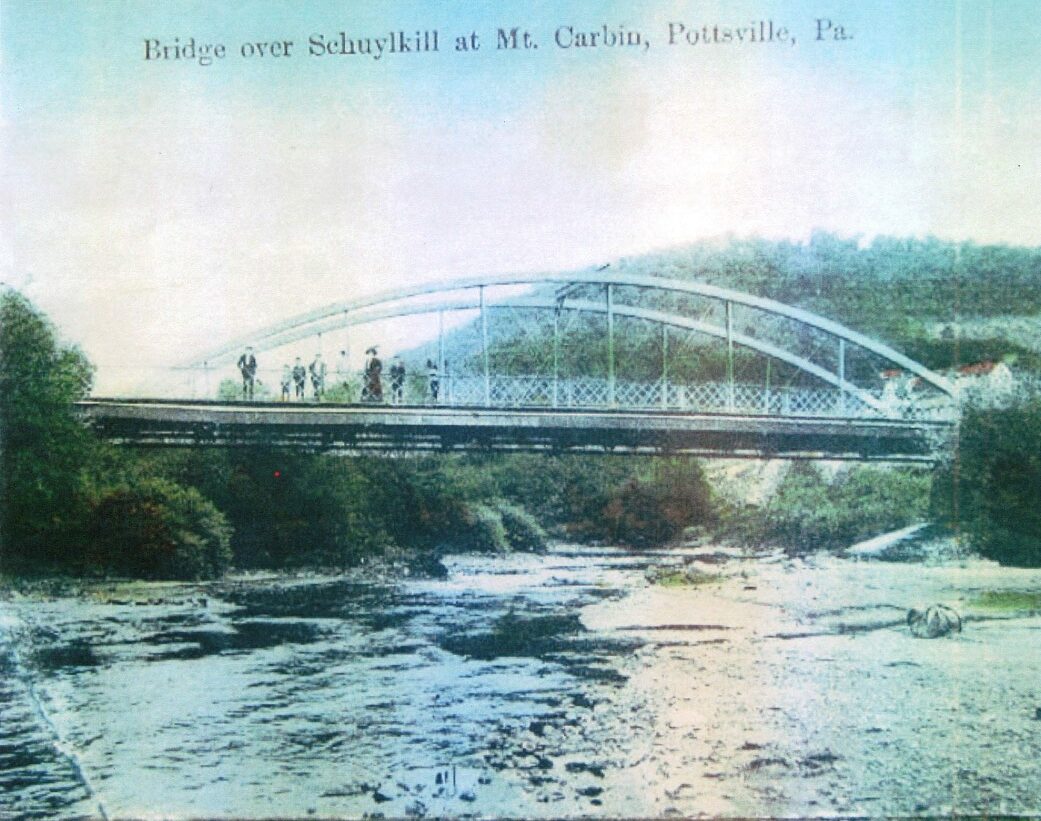
Historic postcard showing pedestrians on the bridge in Mt. Carbon. The railing in this postcard influenced the design of the current replacement railing. (Photo source: Schuylkill County Historical Society.)
In 1926, vehicular traffic was transferred to the new arch bridge to the south but pedestrian use of the truss continued at least until 1974 when the Municipal Authority bought it from the County.
In 2024, it found a new home north of St. Claire on a trail that will eventually once again link the anthracite fields of Schuylkill County with the urban landscape of Philadelphia.
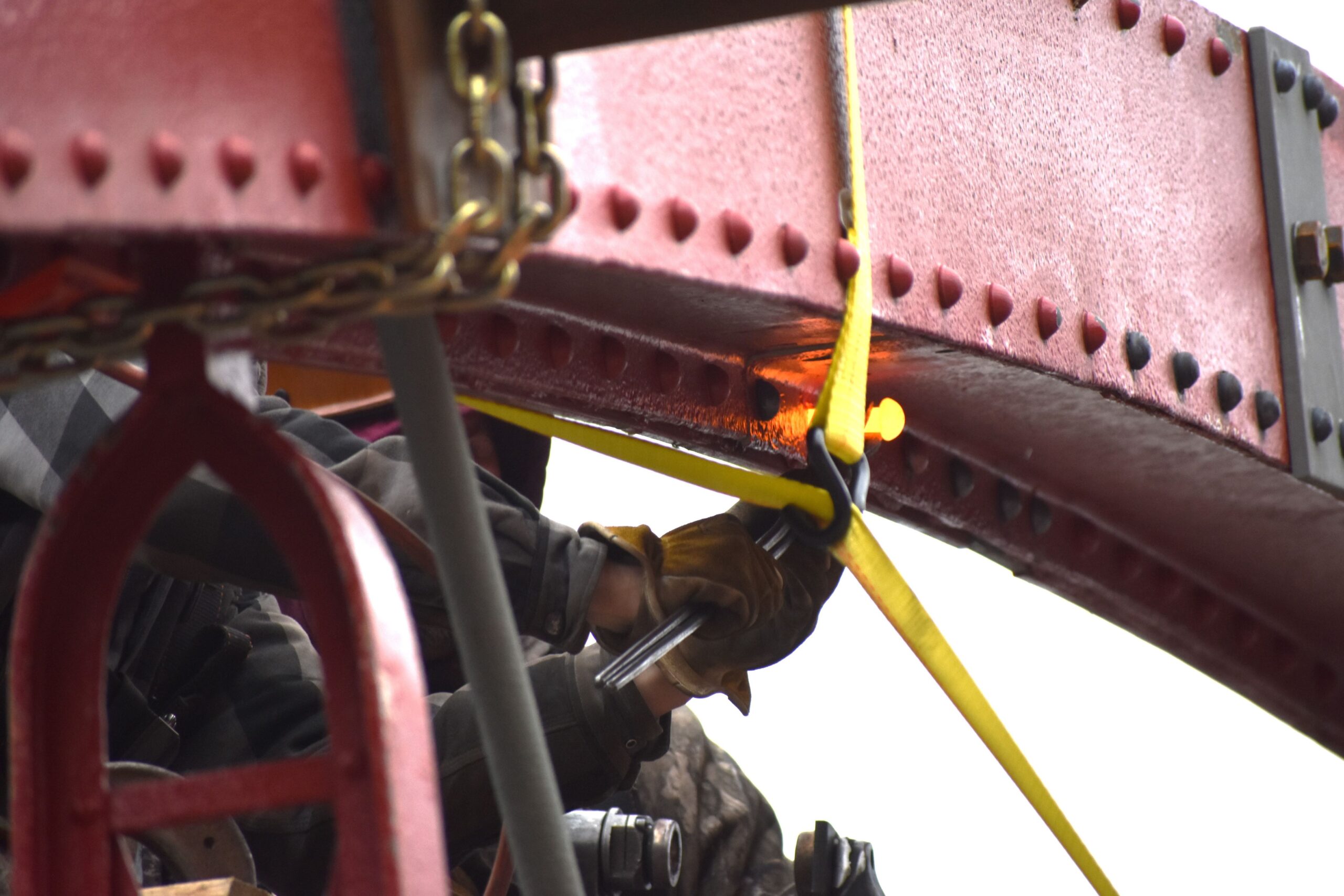
Bach Steel replacing rivets on one of the two arches during the bridge’s rehabilitation. (Photo source: PennDOT.)
I am immensely grateful for all the people who helped us build this historical narrative of the bridge. Without them, we would still have only a partial picture of this structure’s journey. The legacy of their contributions will live on in this bridge.
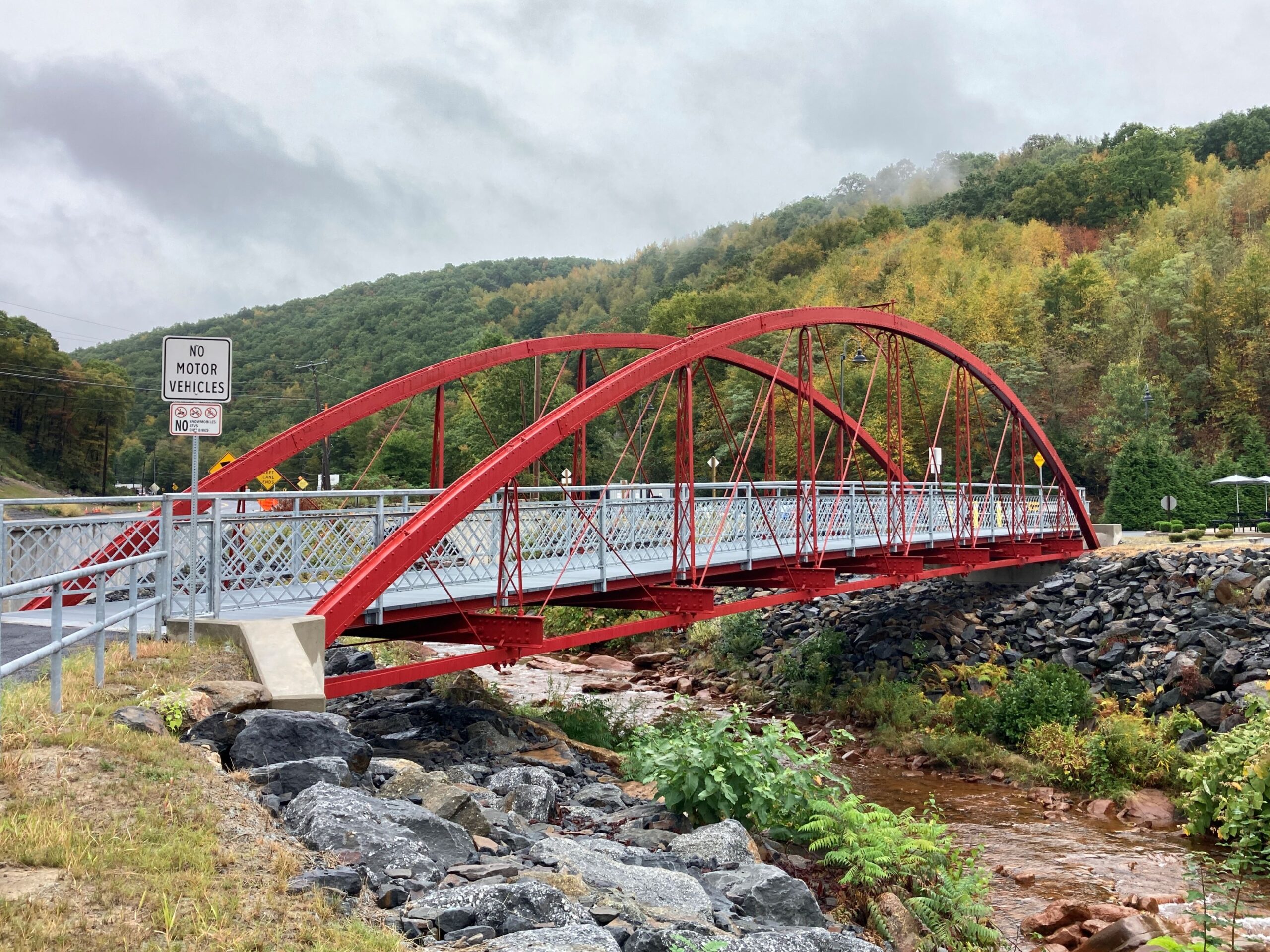
Check out the bowstrings on trails in the Commonwealth:
________________________________________________________________
This week’s guest author is Kristina Lammi Thompson. Kris is a Cultural Resources Specialist for PennDOT’s District 5 and an Above-Ground Cultural Resources Supervisor with PennDOT’s Bureau of Project Delivery.
Comment Policy
PHMC welcomes and encourages topic-related comments on this blog. PHMC reserves the right to remove comments that in PHMC’s discretion do not follow participation guidelines.
Commenters and Comments shall be related to the blog post topic and respectful of others who use this site.
Commenters and Comments shall not: use language that is offensive, inflammatory or provocative (this includes, but is not limited to, using profanity, obscene, or vulgar comments); disparage other commenters or people; condone illegal activity; identify the location of known or suspected archeological sites; post personal information in comments such as addresses, phone numbers, e-mail addresses or other contact details, which may relate to you or other individuals; impersonate or falsely claim to represent a person or an organization; make any commercial endorsement or promotion of any product, service or publication.
If you would like to comment on other topics not related to this blog post but related to PHMC, please fill out the PHMC Contact Us Form.
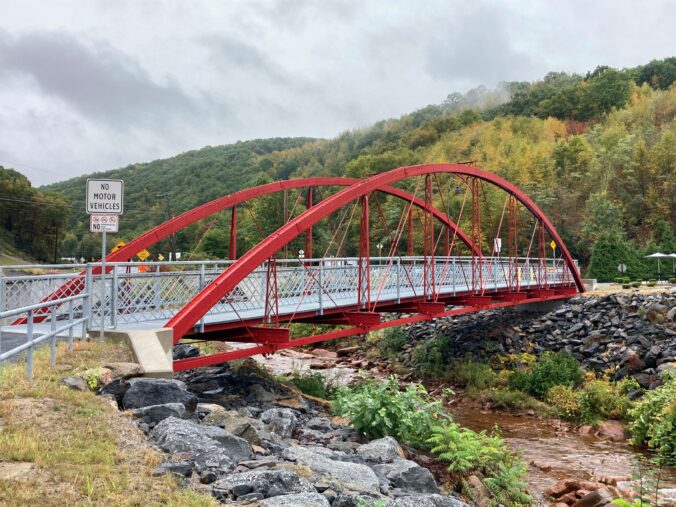
Great article, Kris!
What goes unsaid is the role that you played in the preservation of this bridge! Congratulations to you, the Department and all the others who contributed to saving this rare structure.